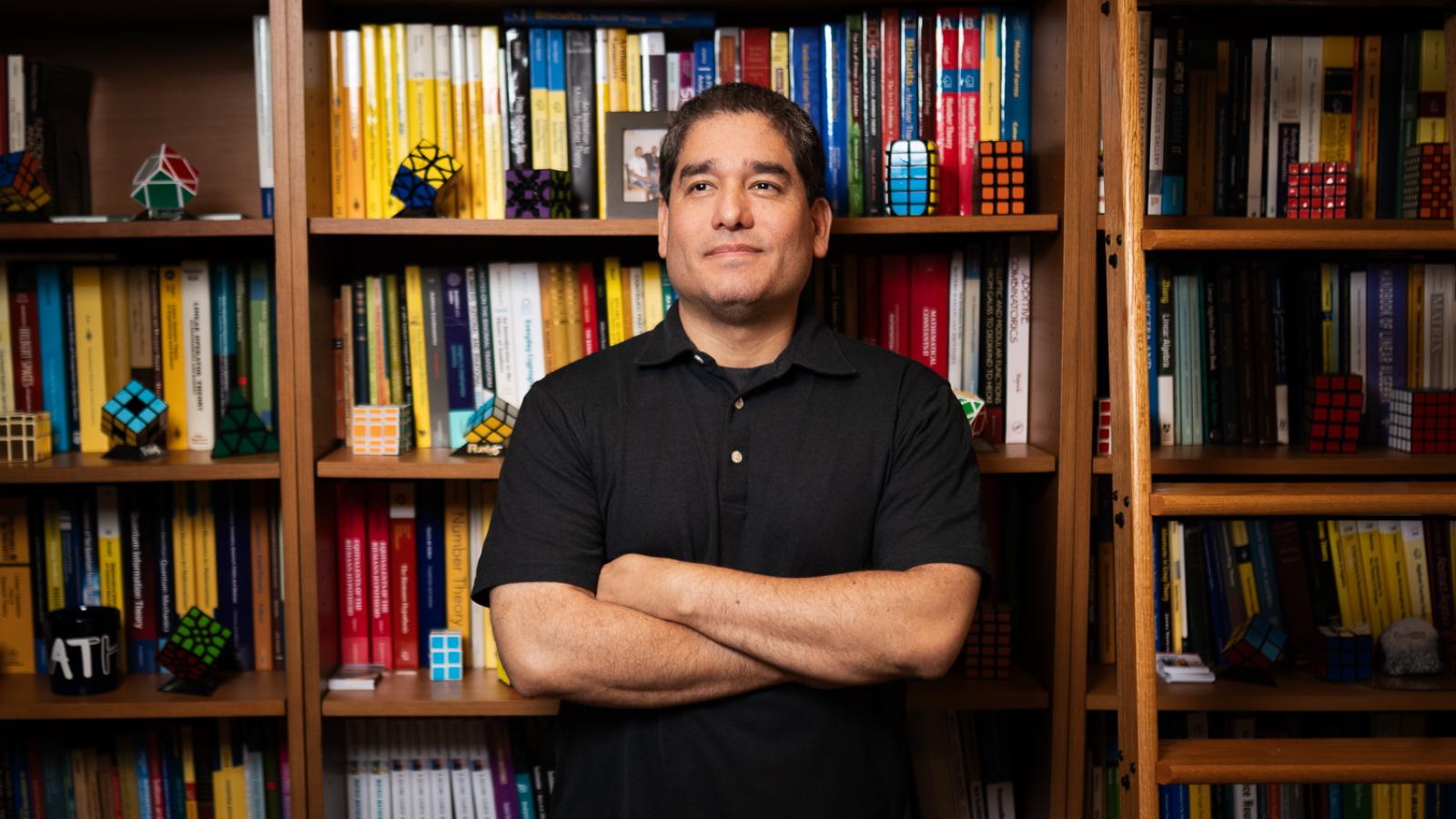Stephan Ramon Garcia, W.M. Keck Distinguished Service Professor and professor of mathematics, received a $285,236 grant from the National Science Foundation last month for a project concerning the dynamic interaction between operator theory, linear algebra, combinatorics, and probability theory.
The three-year grant, which Garcia wrote while chairing his department, is his latest to receive federal funding and will fund many student researchers over the next several years.
“We’re fortunate to have some fantastic and energetic students,” Garcia says. “My philosophy has always been to give students a couple questions and let their imaginations run free. We eventually settle on a project that is novel, exciting for the student and, hopefully, can lead to a publication.”
In this Q&A, Garcia explains what goes into crafting a grant proposal and the scope of his latest project.
Do you write grant applications expecting to receive the award?
You hope you’re going to get it, but you’re never certain. A lot depends on what the budget of the federal government is looking like in a given year, and that’s beyond your control. But certainly, you put a lot of effort into writing it. You can be hopeful, but I would never say you take [receiving] it as a given.
You’re writing it because you know your research deserves to be funded.
You do try to write things to put your best foot forward and show your track record: “This is what we’ve done the last few years. These are all the papers that have been published and submitted, all the prestigious talks I’ve given.” You show what the papers led to—new projects and advances on old problems. You highlight some of the people who are now working on these projects and the trajectories of previous students who were funded by the grant.
Hopefully you have enough credibility that they can see the trajectory you’ve been on.
Explain the scope of the project.
Operator theory is the study of transformations of typically infinite-dimensional spaces that have particularly nice structure. These sorts of things came up in the foundations of quantum mechanics and some physical applications a century or so ago, but they’ve since taken on a life of their own.
These so-called operators, the special transformations, they’re often related to certain spaces of functions related to complex analysis, which you can think of as super-fancy calculus with complex numbers and integrals around curves. There’s a profound intersection between those fields.
The finite-dimensional realm of operator theory is the field we would call linear algebra. In the last several years linear algebra has developed into one of the main backbones of the data revolution. When you think about how a computer does the fantastic things that it’s doing now in AI, a computer can only deal with numbers or lists of numbers or boxes of numbers. Linear algebra is the language of talking about arrays of data, arrays of numbers and how they operate and transform as well as operations you can do upon them.
These are the three main threads and there are intersections between all of them. They interact in very, very interesting ways, especially when probabilistic ideas come into play.
Is this work continuous? Or is there a conclusion to be drawn?
Ideally, we will find new connections and new ideas that are very fruitful, that promise to provide a lot more insight later. One of the best things is coming up with some new ideas that lead to streams of papers that really catch on and that people find interesting and build upon.
That’s the best-case scenario where you say, “Wow, we’ve discovered something really cool and this is just the start, not the end.”
